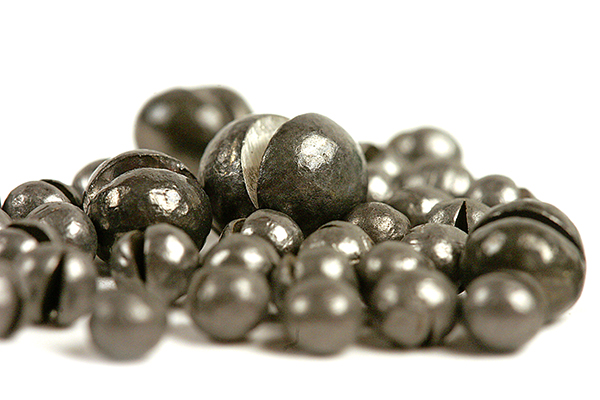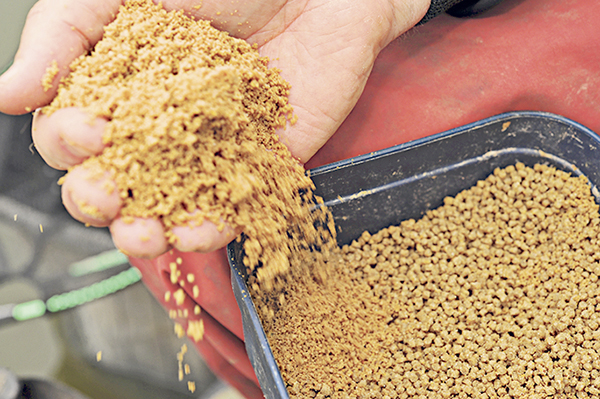Know your stuff | What are the benefits of a pop-up?
Welcome to know your stuff where all of your coarse fishing related questions get answered by our experts!
Question 1) When should I use a pop-up boilie rather than a bottom bait?
A) There are several advantages that a pop-up can offer over a bottom bait. The first is if the lakebed is very weedy or snaggy. In this instance, a bottom bait can become lost in the debris and prove impossible for a carp to find.
Also, if the carp are feeding just off bottom, presenting a bait that’s waving around right by their noses stands more chance of prompting a bite – and in clearish water a brightly-coloured pop-up will stand out a mile when fished over a small patch of pellets.
Question 2) What is the best rig to use with a swingtip, and what species of fish should I be targeting?
A) On certain days a swingtip can perform better than a quivertip as it offers little resistance to a feeding fish and you can ‘read’ bites well. The only downside is that you cannot cast as far, so it is best used for feeder casts of 40yds maximum.
In terms of species, the swingtip is ideal for bream, roach and hybrids that can be shy biters, whereas carp will pull any quivertip around in very violent fashion. That’s not to say you can’t fish for carp with a swingtip, but a quiver is better.
As for rigs, use a slightly heavier bomb or feeder than you would with a quivertip, as casting is more difficult. A simple running rig where the feeder slides on the mainline above the hooklink will produce a more positive bite than a fixed rig, and it is less likely to tangle.
Question 3) When and why should I use catmeat instead of normal luncheon meat?
A) Tinned catfood makes an effective spring carp bait on commercial fisheries. It differs from luncheon meat in that it is very, very soft and the gravy it comes in gives off an oily slick when fed.
It is an out-and-out big-fish bait and is too soft to be cast any distance on rod and line tactics. Instead, fish it in the margins or at short range on the pole in conjunction with pellet and corn loosefeed. You’ll need a big hook though (sometimes as big as a size 10) and a baiting needle to hook it correctly so that it stays on. Also, always make sure you buy the chunks in gravy not jelly!
How to hook catmeat!
Step 1)
Catmeat is usually smells awful to us, but fish love it. Grab a chunk and push a bairting needle right through the middle and out the other side
Step 2)
Next, wrap your hook (which maybe as big as a size 10) around the crook end of the needle
Step 3)
Pull the baiting needle back through the chunk of catmeat, unhook the needle then turn the hook so the point fixes into a different part of the meat
Question 4) I fish a lake that’s quite silty and I’m not convinced that I’m getting an accurate reading when plumbing up. Are there any tricks you could suggest to help?
A) Firstly, avoid using a heavy plummet that will simply sink into the silt. Using a lighter weight such as an SSG shot nipped on to the hook will give you a more accurate reading.
Once you’ve got the correct depth it is also worth thinking about what bait you are using. Maggots and worms can wriggle into the silt while heavy baits such as corn can also sink into it.
If carp are the target, it’s hard to beat a soft expander pellet or a small cube of meat fished over micro pellets or riddled meat. For silverfish, look no further than casters for both hook and feed.
Question 5) How can I get my pellets to the bottom when polefishing to prevent the small fish that sit up in the water nailing them?
A) The trouble with roach, rudd and other silverfish is that they will easily swallow 2mm and 4mm pellets as they fall through the water column.
To get the bait down to the deck where the bigger fish are, it is worth using a binder to create balls of pellets.Place your pellets in a bait box and add water, so they are just about covered. Leave them for five minutes and then add a spoonful of Sonubaits Stiki Pellet.
This will enable you to create small balls of pellets that will stay intact until they get to the bottom – and bypass the little fish.















